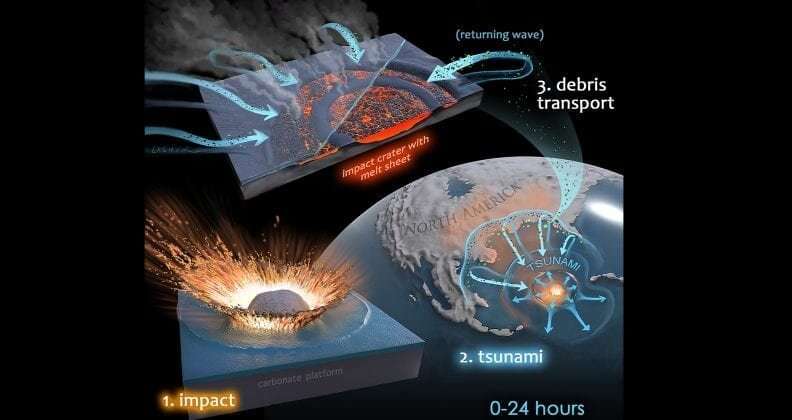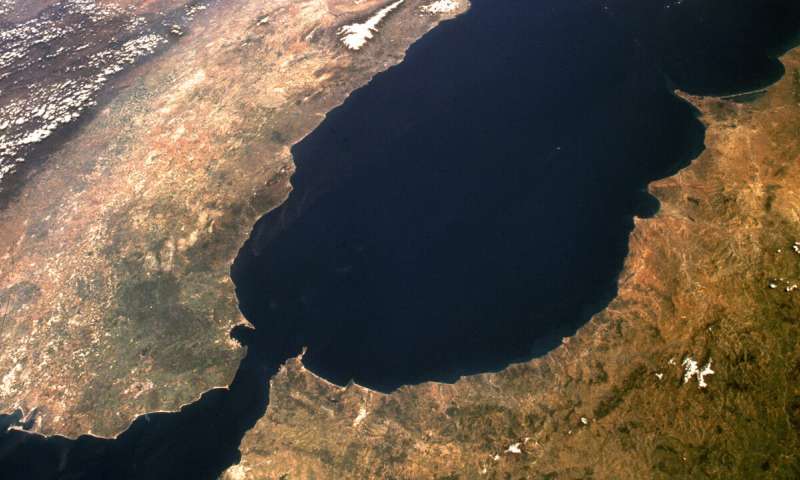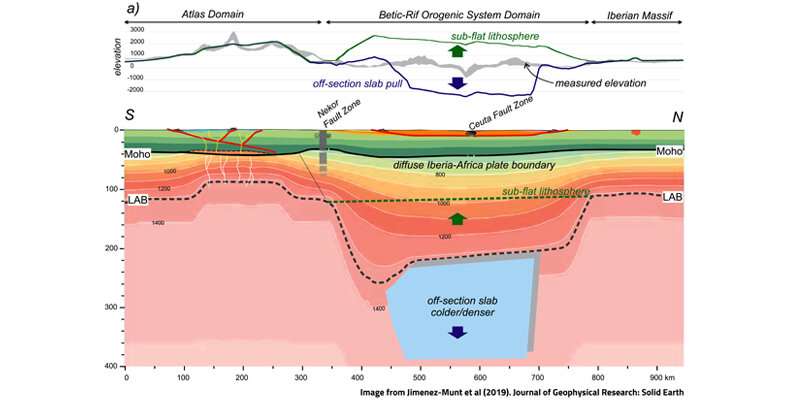At https://phys.org/news/2020-01-microbial-mayhem-chicxulub-crater.html … it was microbial mayhem in the Chicxulub crater – according to a paper published in the journal Geology (https://doi.org/10.1130/G46799.1 ) and in fact this was due to a rapid reinvigoration of microbial life in the aftermath of the asteroid strike …
 … the findings suggest that plant, fungi, and coastal mats were washed into the crater by a giant tsunami coincident with the impact (or shortly thereafter). When the dust settled and sunlight ventured forth there was a rapid resurgence of land plants, dinoflagellates, cyanobacteria and various forms of anaerobic photo synthethic sulfur bacteria, including those from microbial mats in the crater itself.
… the findings suggest that plant, fungi, and coastal mats were washed into the crater by a giant tsunami coincident with the impact (or shortly thereafter). When the dust settled and sunlight ventured forth there was a rapid resurgence of land plants, dinoflagellates, cyanobacteria and various forms of anaerobic photo synthethic sulfur bacteria, including those from microbial mats in the crater itself.
At https://phys.org/news/2020-01-lithospheric-thickening-beneath-betics-rif… ….a geological study of the Gibraltar region topography and its lithospheric structure indicates a 400km deep slab of rock, between what is thought to be the lithosphere and the sublithosphere. This location is where the African plate is said to be bumping up against the European plate. The orogenic domain of the Betics and the Rif mountains (on the other side of the Straits of Gibraltar) is said to differ by 1500m, not much in comparison with the 400km but never the less signficant,we are told. Indeed, it is projected as evidence that subduction is taking place …


The subsidence, or difference in height between the two, may be responsible for the reconnection of the Atlantic with the Mediterranean Sea – leading to the refilling of the basin. On the other hand, a redistribution of oceanic water as a result of axial shift may be to blame (but that is not on the agenda). Anomalies in the geoid were detected as shown by gravimetric data. These anomalies can be put down to the sinking of the lithospheric slab.
